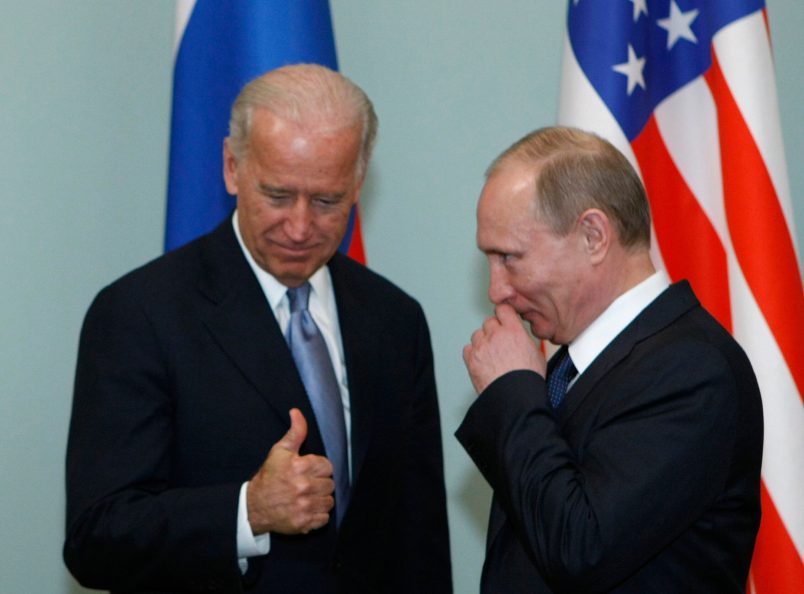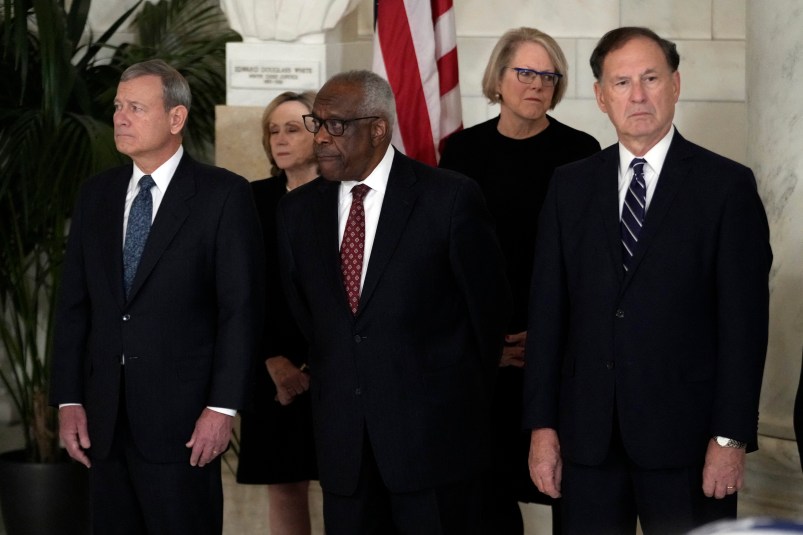“Even with your adversaries, I do think that you have to have the capacity to put yourself in their shoes,” Barack Obama told The New York Times in 2015 in explaining his overture to Iran. The Biden administration needs to do this in its negotiations over Ukraine with Russian President Vladimir Putin.
Putin has intimated that if the United States were to pledge that Ukraine would not be admitted to NATO, as its President Volodymyr Zelensky has requested, Russia would withdraw its visible threat of an invasion. But Biden officials have batted away Putin’s demand. On PBS’s Newshour, Under Secretary of State Victoria Nuland was asked why the United States would not promise to block Ukraine’s membership in NATO. Nuland, who as an Obama official championed the “Maidan Revolution” that overthrew Ukraine’s elected pro-Russian President, replied, “We are not going to change NATO’s open-door policy or more than 70 years of policy. And we are not going to give Russia a veto over the alliances of a sovereign country.”
That sounds like a reasonable response unless you know the history behind the post-Cold War expansion of NATO. It’s a history with which Putin and other Russian officials are very familiar. After the Berlin Wall fell in November 1989, German Chancellor Helmut Kohl and his Foreign Minister Hans-Dietrich Genscher were eager to reunify Germany, but according to the post-World War II treaty, the Soviet Union had a right to retain its troops there. Kohl wanted to get Soviet agreement to withdraw their troops and to allow the reunification.
American President George H.W. Bush and his Secretary of State James Baker were worried that Kohl and Genscher would agree to neutralize Germany in exchange for Soviet support for reunification. In a February 1990 visit to Moscow, Baker and other top American officials proposed instead that in exchange for Soviet support for reunification, they would pledge not to extend NATO beyond its existing border. Baker told Soviet President Mikhail Gorbachev that “there will be no extension of NATO’s jurisdiction or NATO’s forces one inch to the east.” Baker and other officials never wrote down the pledge, and subsequently denied that they had made a promise at all, but the Soviet leaders took it to be a promise. (On the negotiations, see Joshua R. Itzkowitz Shifrinson, “Deal or No Deal: the End of the Cold War and the U.S. Offer to Limit NATO Expansion.”)
The Soviet leaders had reason to fear NATO expansion. Russia and the Soviet Union had suffered three calamitous invasions over two centuries. The Soviet Union had lost 27 million people in World War II. The Soviet Union saw Eastern Europe as a buffer zone against any future aggression from the West. NATO had been an adversarial military alliance against the Soviet Union. The Soviets didn’t want it to expand eastward — and particularly if Germany was to be reunited and to become a great power again. But successive American administrations brushed aside these fears.
In 1996, Bill Clinton, prodded by liberals and neo-conservatives, convinced NATO’s European members to endorse NATO’s expansion eastward. (The neo-conservative lobby for expansion, the U.S. Committee on NATO, was headed by a former Lockheed-Martin official.) The administration’s plan was strongly opposed by George Kennan, who had devised the original containment policy toward the Soviet Union, and a host of other foreign policy officials. Kennan said the plan “shows so little understanding of Russian history and Soviet history. Of course there is going to be a bad reaction from Russia, and then [the NATO expanders] will say that we always told you that is how the Russians are — but this is just wrong.” Over 40 former officials warned in an open letter to the administration that expansion “will strengthen the non-democratic opposition, undercut those who favor reform and cooperation with the West, bring the Russians to question the entire post-Cold War settlement.”
Nevertheless, under Clinton’s urging, NATO expanded eastward, even including Baltic states on Russia’s border. In the early 2000s, the United States and its allies began intervening in Ukraine and Georgia’s politics. The Russians attributed the color revolutions of 2004 to American funding. In 2008, George W. Bush, at the urging of John McCain and Obama, but opposed by top intelligence officials, advocated bringing Ukraine and Georgia into NATO. When the Europeans balked, a compromise was reached by which the countries were assured that they would be eventually admitted. Putin warned at the time that admitting them would pose a “direct threat” to Russia.
That’s the history that is left out in the many stories and analyses about the administration’s options in Ukraine. It’s a very obvious case of an American administration being unwilling to put themselves in the shoes of their adversaries, and it’s a mistake that in this case could lead to war and to the outcome that the Biden administration rightly says it wants to avoid. There is room for compromise. Contrary to what Nuland asserted, NATO does not have and never has had an open-door policy.







